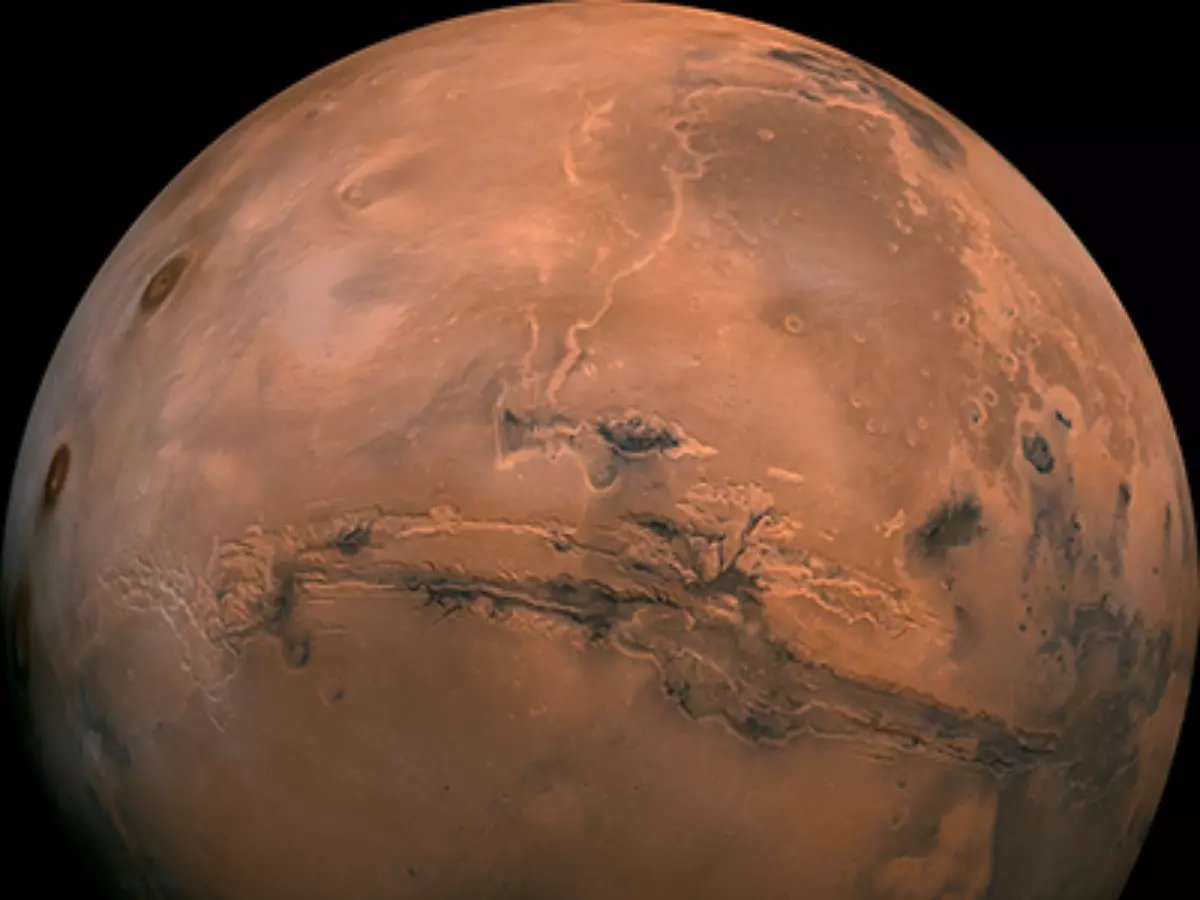You Can Hear The Mars Meteoroid Crash That Revealed Chunks Of Ice On The Red Planet
The meteoroid strike revealed big ice chunks on Mars

When NASA's InSight mission detected a quake on Mars (a marsquake), scientists realised that Mars and Earth might not be so different.
Now, scientists have figured out what caused the marsquake. Turns out, a meteoroid crashed into Mars about 3,500 kilometres (2,174 miles) away from the lander.
 NASA/JPL-Caltech/MSSS
NASA/JPL-Caltech/MSSS
Meteoroid impact reveals ice on Mars
The meteoroid's impact created a crater on Mars. At the same time, InSight recorded a magnitude 4 marsquake on December 24, 2021. New details were revealed in images clicked by the Mars Reconnaissance Orbiter that has been orbiting Mars since 2006.
The orbiter spotted a fresh crater in February. It was only later that scientists realised the gravity of the situation - this impact was among the largest meteoroid strikes on Mars since NASA began studying it.
Also read: Life On Mars Perished Due To Climate Change Caused By Microbes, Study Claims
 NASA
NASA
There's more! The meteoroid strike also revealed big ice chunks on Mars. These ice chunks were found close to the Martian equator that is rather warm, marking the first time something like this was recorded on Mars.
"The image of the impact was unlike any I had seen before, with the massive crater, the exposed ice, and the dramatic blast zone preserved in the Martian dust," said Liliya Posiolova, orbital science operations lead for the orbiter at Malin Space Science Systems, in in a statement.
 NASA
NASA
By studying this ice, scientists can get a better understanding of previous climate conditions on Mars, and how the ice lingered there for so long. The crater from this meteoroid's impact is 150 metres across and 21 metres deep. Some of the crater material was flung as far as 37 kilometres away.
Also read: Fresh Evidence Points To The Existence Of Liquid Water On Mars
Scientists at NASA also recorded the sound of the impact. Check it out below:
Two new studies highlighting the meteoroid impact and its effects were published on Thursday in the journal Science.
What do you think about new things that we're learning about Mars? Let us know in the comments below. For more in the world of technology and science, keep reading Indiatimes.com.
References
Yang, Y., & Chen, X. (2022). A seismic meteor strike on Mars. Science, 378(6618), 360¨C361. https://doi.org/10.1126/science.add8574
Kim, D., Banerdt, W. B., Ceylan, S., Giardini, D., Leki?, V., Lognonn¨¦, P., Beghein, C., Beucler, Carrasco, S., Charalambous, C., Clinton, J., Drilleau, M., Dur¨¢n, C., Golombek, M., Joshi, R., Khan, A., Knapmeyer-Endrun, B., Li, J., Maguire, R., . . . Panning, M. P. (2022). Surface waves and crustal structure on Mars. Science, 378(6618), 417¨C421. https://doi.org/10.1126/science.abq7157
Strickland, A. (2022, October 27). Space rock slams into Mars, forming a crater that revealed chunks of ice. CNN. https://edition.cnn.com/2022/10/27/world/mars-nasa-meteoroid-impacts-scn/index.html
